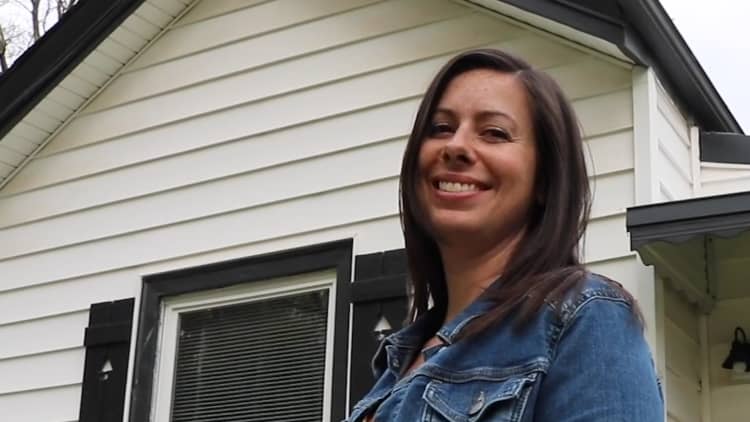Before you engage the seemingly endless debate around when and how much to tip, it's worth remembering that there's no actual rulebook.
Sure, there are some people — barbers, cab drivers — who etiquette experts say should always get a tip, and others — doctors, lawyers — who they say should never get one. But the etiquette police aren't coming to haul you off if you break with these conventions.
That's good news for many Americans, given the results of a recent survey on tipping practices from Bankrate. Because when it comes to tipping, people are all over the map.
Restaurant servers are the people Americans say they tip the most often, but only 65% of survey respondents said they always tipped for table service, with a shocking 5% saying they never tip at all.
People were more evenly split on whether to tip coffee shop baristas always (22%), most of the time (26%), only sometimes (30%) and never (23%).
"There's huge confusion on this issue. There's massive resentment," says Thomas Farley, an etiquette expert also known as "Mister Manners."
He and other etiquette experts are here to help. Read on to find out what Americans are getting right and wrong when it comes to tipping
Here's how much to tip
Remember, the following are only guidelines that are based on a couple of assumptions. One is that many people who work in industries where tips are customary rely on these gratuities to make ends meet.
Another is that you want to show gratitude to the people who make your life a little easier and more pleasant. "There's appreciativeness to good tipping, and it's important to keep that feeling central," says Daniel Post Senning, co-author of "Emily Post's Etiquette: The Centennial Edition." "It really is up to you and what's going to make you feel good."
With that in mind, here's what etiquette pros recommend you tip, in order of who Americans tip most often to the least.
Restaurant servers
You'll still hear the classic 15% to 20% thrown around, but 20% has pretty much become the norm for sit-down service, says Farley. "The national average is around 18%, so the idea that 15% is the standard is pretty much gone," he says.
As for the folks who say they tip servers only sometimes or never: "I do not believe it's justified to ever not tip someone for lackluster service. I believe you should always leave a tip," says Elaine Swann, an etiquette expert and founder of the Swann School of Protocol.
Food delivery
Plan on tipping 10% to 20% depending on the complexity of the order, says Dianne Gottsman, an etiquette expert and founder of the Protocol School of Texas. If you live in a large building and the delivery person is carrying tons of groceries, "err on the side of generosity," she says.
Hairdressers and barbers
Ask for your 15% to 20% tip to be split among the professionals who worked on your hair, says Gottsman. Or, if you have small bills, dole out your dollars accordingly.
Taxi and rideshare drivers
Initially, there wasn't a tipping convention for rideshare drivers, who were assumed to be independent operators who set their own rates. But that has shifted as the industry has changed, and "a tip for your driver is now an expectation," says Senning. Plan on tipping 15% to 20% of the cost of your ride.
Baristas
Etiquette experts say tipping at coffee shops is discretionary. If you do choose to tip, "change for the tip jar or $1 or $2 is fine," say the authors of "Emily Post's Etiquette."
Consider adding a gratuity if a barista goes "above and beyond" in their service, say by remembering your name or regular order, says Swann.
Hotel housekeeping
Gottsman suggests leaving at least $3 to $5 a day or $1 per person per day if you have a larger crew. Leave some money out every day, rather than in a lump sum at the end, as housekeepers frequently change shifts, she says.
Furniture and appliance delivery
"Emily Post's Etiquette" says a tip here isn't required. "If they deliver to a fourth-floor walk-up, unpack and set up the new furniture, and take away the old, then you might tip $10 to $20 per person," the authors suggest.
When picking up takeout
Tips are optional, but there was "an emerging consensus" to leave around 10% for takeout during the pandemic as a way to express appreciation for restaurants staying open, even when dine-in service wasn't an option, says Senning.
Home service and repair people
It's not customary to tip professionals, such as electricians, plumbers or cable technicians, says Farley. The same rule applies to doctors, lawyers and teachers.
DON'T MISS: Want to be smarter and more successful with your money, work & life? Sign up for our new newsletter!
Get CNBC's free Warren Buffett Guide to Investing, which distills the billionaire's No. 1 best piece of advice for regular investors, do's and don'ts, and three key investing principles into a clear and simple guidebook.
CHECK OUT: Tired of ‘tipflation’? 5 times it’s OK not to tip, according to etiquette experts



